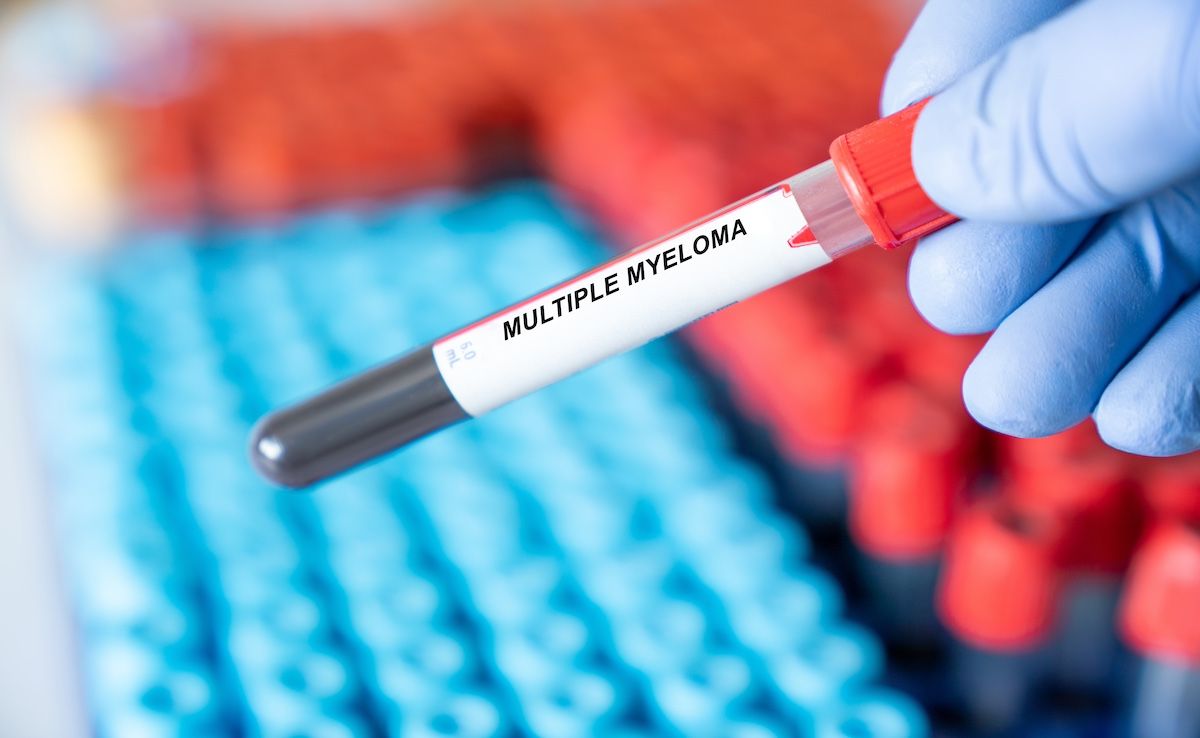- Center on Health Equity & Access
- Clinical
- Health Care Cost
- Health Care Delivery
- Insurance
- Policy
- Technology
- Value-Based Care
Novel Therapies Needed for Older Patients With RRMM
Relapsed/refractory multiple myeloma (RRMM) remains an incurable hematologic cancer, often resulting in patients treated with several classes of medications—particularly older patients.
Due to high health care costs and elevated rates of health care utilization among older patients with Medicare coverage living with the incurable1 hematologic cancer relapsed/refractory multiple myeloma, a new report in Oncology and Therapy highlights how novel therapies could help to fill treatment gaps and improve patient outcomes as seen by disease control, progression-free survival (PFS), and overall survival (OS).2
These patients are frequently treated, or exposed, to 3 or more medication classes during their treatment—CD38 monoclonal antibodies (mAbs), immunomodulatory drugs (IMiDs), and proteasome inhibitors (PIs)—the report authors highlight. Penta exposure is also highly likely; this is when patients are exposed to at least 5 medications, comprising 2 or more each of IMiDs and PIs, and at least 1 CD38 mAb. However, data on older patients and their outcomes following such exposures remain limited.
Outcomes of interest in this analysis were time to discontinuation (TTD), time to next treatment (TTNT), OS, health care resource utilization (HRU), and health care costs (2021 USD). Patients were placed in 1 of 4 cohorts: triple-class exposed (TCE), triple-class refractory (TCR), penta exposed (PE), and PE-TCR. There was a preindex period, or the 180 days leading up to the start date (the index date) of the first line of therapy after becoming TCE or PE, and a follow-up period, which extended from the index date to the first of the end of continuous enrollment, death, or the end of the study period.
Multiple myeloma remains incurable, and among older patients with relapsed/refractory disease, this highlights the great need for novel therapeutics that can help to improve outcomes this group | Image Credit: luchschen-stock.adobe.com

There were 2830 patients in this analysis who were TCE. Of them, 1371 were also TCR, 1121 were PE, and 774 were PE-TCR. The mean (SD) overall age was 75.9 (6.7) years, and 95.5% were 65 years or older. More than half of the patients in each cohort were female patients, the most common year of index date was 2020 (31.4%) or 2019 (27.3%), and the top 3 comorbidities were hypertension (71.2%), chronic kidney disease (64.9%), and chronic pain (62.5%).
Patients who were TCR had a shorter mean time between diagnosis and their index date vs patients who were PE: 44.3 (38.9) vs 55.0 (50.0) months. TCR status also correlated with fewer patients having a history of autologous stem cell transplant (ASCT) vs being PE, at 20.6% vs 29.3%.
More than 96% of all patients had treatment histories with lenalidomide or bortezomib, 42.9% of those who were TCE and 53.0% of those who were TCR had received pomalidomide, and more than 95% of patients who were PE or PE-TCR, pomalidomide. Everyone had received daratumumab at some point. Mean lines of treatment were 3.3 (1.4) in patients who were TCE and 4.5 (1.5) in patients who were PE or PE-TCR.
For the index line of treatment, pomalidomide was most common overall (43.0%), followed by daratumumab in patients who were TCE (41.7%) and PE (29.9%) and then carfilzomib in patients who were TCR (38.5%) and PE-TCR (27.5%). However, when regimens were analyzed, pomalidomide plus daratumumab was the most common among patients who were TCE (17.2%) and PE (7.0%), and pomalidomide plus carfilzomib for patients who were TCR (10.3%) or plus elotuzumab for PE-TCR patients (7.4%).
Median TTD was shortest in patients who were PE-TCR and longest in patients who were TCE: 4.2 (range, 3.7-4.8) and 6.6 (range, 6.3-7.4) months, respectively. At the 1-year mark of treatment, probability of remaining on that treatment was lowest among patients who were PE-TCR (18.2%) vs highest among patients who were TCE (34.8%).
Following the index line of treatment, for patients who received another line, those who were PE-TCR had the shortest median TTNT and patients who were TCE, the longest:
- TCE: 5.2 (95% CI, 3.3-9.2) months
- TCR: 4.9 (95% CI, 3.2-8.2) months
- PE: 4.3 (95% CI, 3.0-7.5) months
- PE-TCR: 4.1 (95% CI, 2.8-7.0) months
OS was shortest in patients who were TCR, at 13.0 (95% CI, 11.9-14.0) months, and longest in patients who were PE, at 15.9 (95% CI, 14.8-17.6) months.
The TCE cohort has the fewest monthly physician office visits (7.02) and the PE-TCR cohort, the most (8.00).
Lastly, cost. Total mean overall all-cause cost was $23,091 ($10,432), but this figure rose to $23,993 ($10,045) for the TCR cohort; $23,755 ($11,319) for the PR cohort; and $24,412 ($11,339) for the PE-TCR cohort.
The study authors emphasize their findings are important because more data are needed on this population of patients—those who have relapsed/refractory multiple myeloma and have extensive treatment exposure—to optimize decision-making regarding their health care. Also, while most prior studies have focused on younger patient groups, their findings echo previous studies, which have shown a high degree of treatment heterogeneity among older patients with Medicare coverage and that there is no standard of care for these older patients.
This leaves the window open for novel treatments to be investigated to fill these care gaps, including chimeric antigen receptor T-cell treatment, antibody-drug conjugates, cereblon E3 ligase modulator drugs, and immune fusion proteins.
References
1. Multiple myeloma. Cleveland Clinic. Accessed August 6, 2024. https://my.clevelandclinic.org/health/diseases/6178-multiple-myeloma
2. Delea TE, Ma Q, Kroog GS, et al. From triple‑ to penta‑exposed multiple myeloma: a real‑world study in a Medicare population. Oncol Ther. Published online August 4, 2024. doi:10.1007/s40487-024-00291-6
